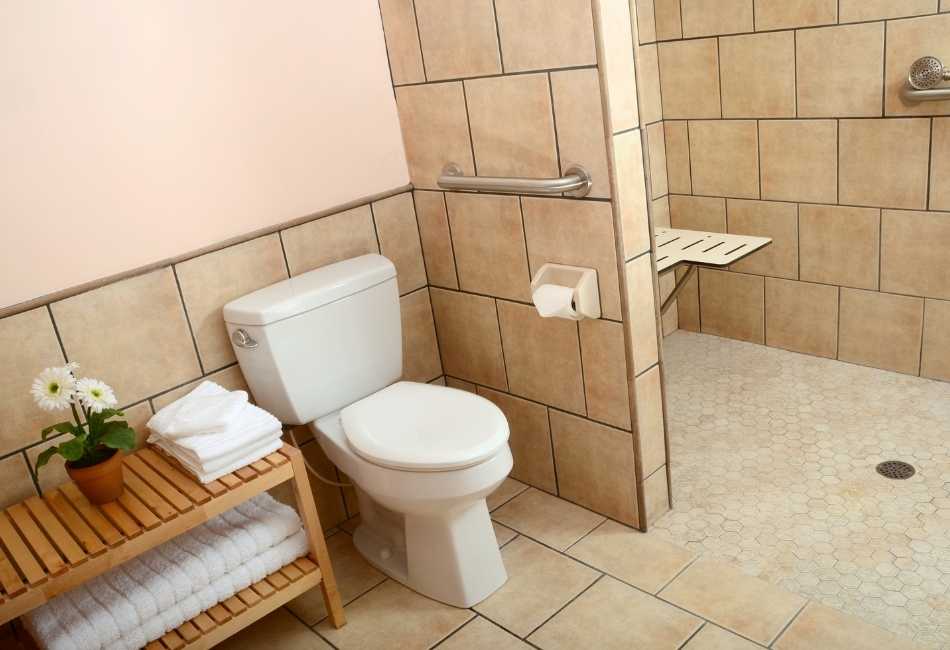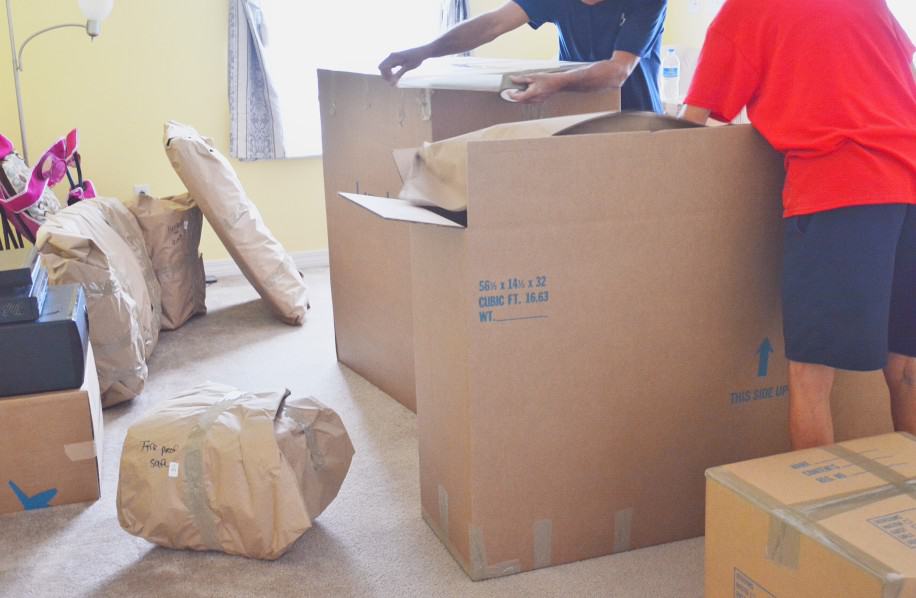
Moving is a challenging experience for everyone. Packing, saving money, coordinating movers, and everything in-between are all quite burdensome tasks that can weigh heavily on anyone’s shoulders. When living with disabilities, these responsibilities can become far more pronounced, as there are many more factors to consider during this transition.
When moving as a differently-abled person, you will first need to ensure that your new home is fully accessible to you, according to your condition(s). Review your rights if you are planning to rent, and look into contractors that can modify the new house to accommodate you. Many organizations offer funding for moves like this, so reach out to them for support.
Since there is so much to consider, it is best to give yourself as much time as possible when preparing for your new home. Not only can the logistics of the move impose a mental burden on you, but you may struggle with the emotional aspect of leaving your current home as well. Take your time and read the guide below to learn what to expect during this change.
Getting Ready to Move as a Differently-Abled Person
The process of preparing for a move will likely look different for someone with disabilities than a non-disabled individual. There are numerous factors to consider when planning the logistics of your relocation, along with the basics of the move itself.
For starters, you will need to verify that the home is fully accessible for your specific condition. Once this detail is ironed out, you can then begin considering potential modifications, financial requirements, healthcare resources, and finally, step into this new chapter of your life.

Review Your Accessibility Checklist
Before you do anything else, verify how accessible your new home’s layout is. Presumably, you have already toured and closed on the home you are preparing to move into. Still, before you proceed with the residential transfer, you need to check one final time that the house fulfills your needs and meets your specifications.
The experts at Mobility Management have provided a checklist to make this new chapter of your life a bit easier. Depending on your specific condition, here are a few key things that you might need in your new home (Source: Mobility Management):
- There should be ramps and slopes that provide accessible entry points into the home. These should have a maximum incline of 1 inch per foot and be at least 36 inches wide with handrails on either side.
- The garage should have a vertical clearance of at least 98 inches for vehicles with raised roofs. If there are only public parking spaces available, these spaces should still be accessible and lack built-up curb ramps.
- Doorways should measure at least 32 inches in width and feature hardware that can be manipulated with one hand without twisting the wrist or similar movements. Doorways should also have 18 inches of open floor space near the handle to provide space for wheelchairs and other mobility equipment.
- Bathrooms should have at least one horizontal grab bar between 33 and 36 inches from the ground, measuring a minimum of 40 inches long. Bathroom elements such as the toilet, sink, showers, and medicine cabinets should all be designed with maximum accessibility in mind for all who may require mobility aids.
- The beds in the house should have an area of at least 36 inches wide on either side so that individuals in wheelchairs or other mobility assistance can access them independently.
- Closets would ideally have rods and shelves that do not exceed 48-54 inches in height from the floor, to maximize access for mobility challenges.
Know Your Rights Before the Move
The second critical element in the moving process as a differently-abled person is becoming familiar with your rights. Many people that live with disabilities, whether physical or mental, require accommodations to achieve and sustain a comfortable standard of living. Unfortunately, these accommodations are not always available to renters.
If you’re preparing to sign a lease (instead of close on a home purchase), it’s essential to know your rights as a renter with disabilities. Why? Landlords, especially private landlords who rent out single rooms in homes or offer similar informal agreements, are notorious for denying people with disabilities their fundamental rights.
For example, imagine that you were someone living with a disability, such as epilepsy. You might live with a service dog who assists you in working through your seizures. Although it is your right to bring your service animal to your new home, regardless of the pet policy, it is highly likely that your new landlord will reject your application upon learning about your dog.
According to the Fair Housing Act, some of your rights as a renter with disabilities are as follows (Source: FindLaw; The United States Department of Justice):
- You have the right to request the implementation of reasonable accommodations as they pertain to the complex’s or housing authority’s “rules, policies, practices, or services.”
- Note: The requested accommodations must be directly related to the disability. Some of the most common examples of such requests include the allowance of a service animal despite the general prohibition of pets in the residence and access to specialized parking spaces.
- You have the right to modify rental properties to increase access while you are living there. However, you might be required to remove these modifications upon moving out if the landlord believes the changes will introduce hazards to the tenant moving in after you leave.
- Note: The Fair Housing Act recognizes the denial of such modifications as discriminatory. Further, under this law, multi-family establishments with four units or more are required to have accessible entrances, common areas, doorways, and other residential and public elements such as those listed above.
- You have the right to refuse to answer questions that violate your privacy. Remember that your landlord is not allowed to question whether you have a disability or your condition’s severity, although they can verify your eligibility for accessible units. Still, in some cases, you may need to verify your disability and needs for accommodation.

Hire Professionals to Modify the New Home
If you determine that your new home must be modified, your next step is to hire an organization to make these changes for you. One of the most trusted organizations in the United States specializing in such work is the United Disabilities Services Foundation (UDSF). They are a non-profit aimed at supporting differently-abled seniors, veterans, and others’ independence in their homes.
Over more than five decades, UDSF has served the Midwest and the southeastern U.S. in addressing an array of residential needs, one of which is home modifications. Per room, they offer (Source: UDSF):
- Bathroom: Walk-in bathtubs with seats or lifts, hand grips, grab bars, safety rails, accessible toilets and showers, and more.
- Bedroom: Accessible closets, storage for mobility equipment, infrastructure for lifting equipment, bedside controls, and more.
- Stairlifts (can be modified for either straight or curved staircases)
It’s no secret that securing such services is a financially draining process. Although the UDSF is non-profit, you may still need help gather the funds to pay for these modifications and other facets of your move. Fortunately, this organization (among others) offers financial assistance for people in your position.
Find Funding for Moving with Disabilities
This is the last part of the preparation phase of your move. To finalize your relocation, you will need to make sure that you have the funding to cover moving assistance with both packing and transportation, in addition to the new home’s modifications. (Of course, this is all separate from funding the residence itself).
Luckily, many organizations are willing to ease this economic burden. Some of the most notable organizations that offer such help are listed below:
- Administration for Community Living (ACL): This organization offers both mandatory and discretionary grants, meaning that you can follow two distinct application paths to acquire financial assistance. The mandatory path follows legislative requirements, while the discretionary path is competitive. (Source: ACL)
- Note: The ACL also supplies funding directly to states and institutions that support seniors and differently-abled people. With this in mind, you may be able to receive ACL funding indirectly through state and non-profit application programs.
- American Disabled for Attendant Programs Today (ADAPT): This American grassroots organization aims to increase equality, recognition, and accessibility for people with disabilities throughout the country. They aim to ease the transition from care homes into the general housing community for people living with disabilities. (Source: ADAPT)
- Note: ADAPT’s funding opportunities are primarily available as “subsidized housing vouchers.” These are procured through their program, Access Across America, which is designed to increase access to affordable, accessible housing in the States. Those living with disabilities are just one of the many demographics eligible for assistance.
- Association of University Centers on Disabilities (AUCD): This organization is focused on the multifaceted inclusion and extension of equality for people living with disabilities and their loved ones. Although they do not have a specific program dedicated to providing housing for differently-abled people, they offer financial assistance through the UCEDD Resource Center. (Source: AUCD)

Creating a Timeline for Your Move
Once you have all the crucial details set in stone, it’s time to get the process moving (no pun intended). Before you jump into it, write down the ideal timeline for your move. Remember not to rush any of the necessary steps, but tailor your experience to your needs. This move is for you – not your movers or other contractors – and should be planned as such.
Here is a moving template you can use to plan your move day by day:
| Day | Task | Special Assistance Needed |
| 1 | Make an inventory of belongings. This will help you keep track of everything that will be transferred from your current home to your new home. | None |
| 2-8 | Pack up your documented belongings. Packing an “essentials box” will help ease the stress of acclimating to your new home. You won’t have to search for important possessions immediately upon move-in. | Family; Friends |
| 9 | Perform the final walk-through to check that housing modifications are appropriate for your condition. | Contractor |
| 10 | Transfer your belongings to your new house. Ensure that movers place things in accessible locations that do not hinder your ability to move comfortably throughout the house. | Movers; Family; Friends |
| 11 | Unpack and settle in. | Family; Friends |
Remember that this is just a template that can be adjusted to your specific needs. You can make changes as you see fit and add elements to the timeline as needed. If you feel that you need extra days to make your move or complications arise with the housing modifications, add days to make room for the surprises. Feel free to write in additional special assistance teams as well.

Preparing for the Emotional Aspects of Moving
Admittedly, moving can be a scary thing. When you have called a place “home” for several years and have grown confident in that location’s safety, the idea of uprooting your life and settling into another residence can be quite overwhelming. These feelings are likely to be even more pronounced when living with a disability, as it can take quite a while to feel welcome and secure in a new place.
Further, for those transferring from institutions like nursing homes or other group and assisted-living residences, the transition can be significantly more difficult than moving from a single-family home. With all this in mind, give yourself time to experience the full range of emotions associated with leaving your current home.
Children with disabilities, especially mental conditions, may experience feelings of attachment to their current home. If they have grown accustomed to certain routines, you can reasonably expect that they will have trouble settling into those same routines in a brand-new environment. Give your child time to adjust to their new surroundings.
It is important to acknowledge that, in many cases, moving someone with a disability is a necessity, as opposed to a voluntary choice. For example, a senior may need to move in with their family from previously living alone to increase their safety and security. This can be a tough adjustment, so be as understanding and compassionate as possible during this time. (Source: Life Storage Blog)
Identifying Healthcare Services Near Your New Home
You need to be sure that you will be just as safe and cared for in your new home as you were in your previous residence. To do so, you must confirm that all necessary hospitals, clinics, and more are within a reasonable distance of your new address. It may not be wise to move to a new location that is further away from the healthcare services your well-being depends on.
The best way to look for these services near your new neighborhood is to list the help you currently receive and match those to available amenities in the new area. It would also be best to speak with your doctor, as they will likely have suggestions for which physicians and specialists you can rely on as you step into this new chapter of your life.
Even if you do not seek such advice from your healthcare providers, it is wise to speak with them before moving. Informing them of your relocation is essential to a smooth transition of care, ultimately ensuring your safety and well-being. It may also be beneficial to refill your prescriptions before leaving, so you don’t have to worry about them too soon after moving.
Some of the vital healthcare resources you will need to locate and secure before the move include (Source: Unpakt):
- Hospital
- Emergency services
- Physicians and specialists (especially in-home care physicians)
- Pharmacy

Helping Your Differently-Abled Loved One Move
Perhaps you are not the person with disabilities who needs to relocate. If not, you may be looking to support someone you love who is in this position. One of the best things you can do for your loved one at this time is to involve them in the process as much as they can reasonably handle.
Although you may feel that you are doing what’s best for them by asking them to sit back and relax while you and the movers are doing all the work, you may be making them feel excluded, even helpless. Give them tasks to fulfill for the move so they can feel involved and connected to the process.
Not only will it help avoid feelings of helplessness, but it might also support them to work through their emotional attachment to their previous home gradually.
In Conclusion
Moving homes as a differently-abled person or supporting someone you love in doing so is a challenging process. It requires a great deal of planning and consideration of collaborative work, along with financial, emotional, and healthcare factors. Fortunately, you are not alone in this transition.
Many organizations work to provide people with disabilities equal access to housing, regardless of their financial, mental, or physical circumstances. Reach out to your community and organizations like ACL, ADAPT, and AUCD to prepare for your transition to your brand-new residence.
